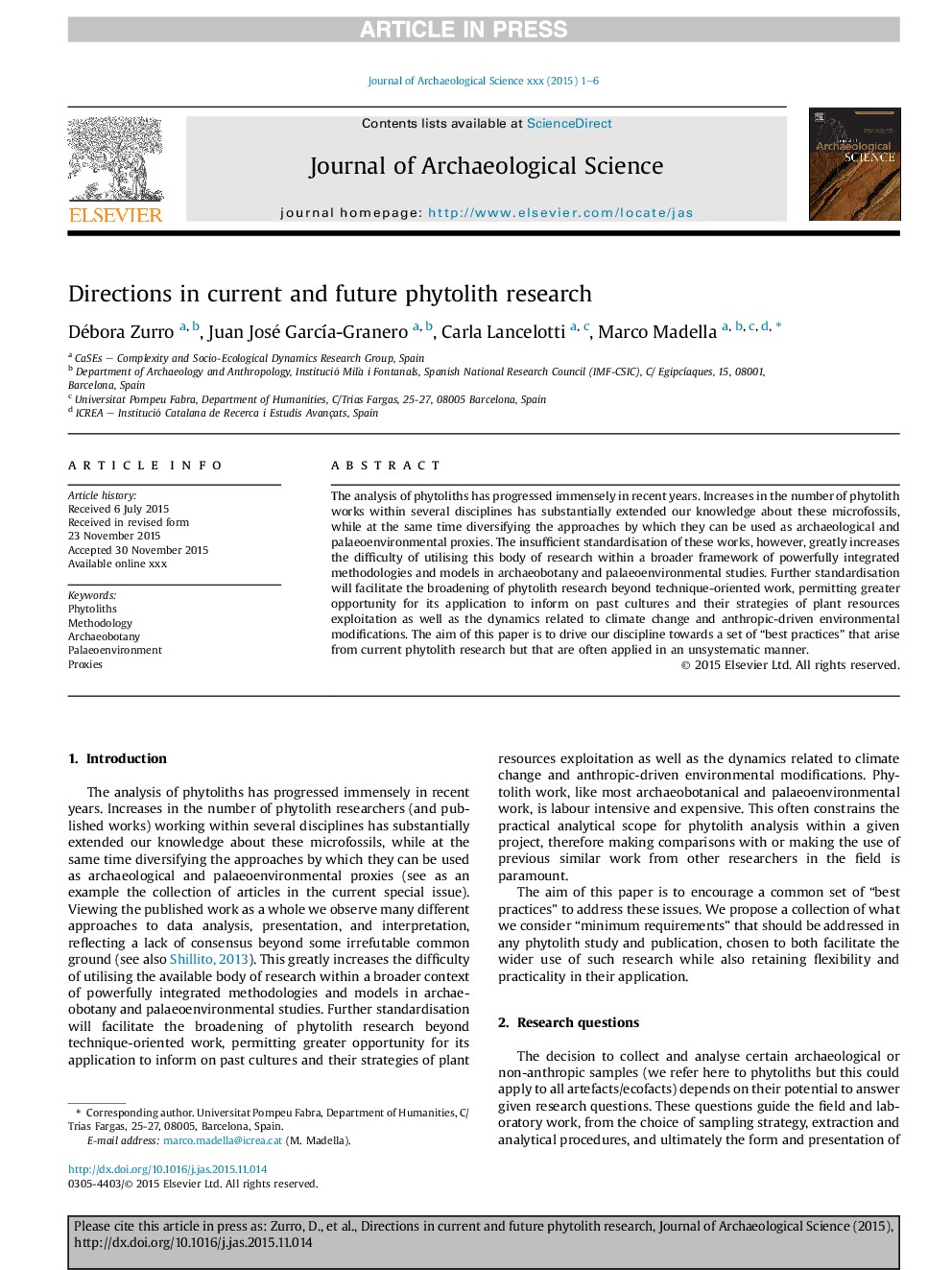| Article ID | Journal | Published Year | Pages | File Type |
|---|---|---|---|---|
| 7441493 | Journal of Archaeological Science | 2016 | 6 Pages |
Abstract
The analysis of phytoliths has progressed immensely in recent years. Increases in the number of phytolith works within several disciplines has substantially extended our knowledge about these microfossils, while at the same time diversifying the approaches by which they can be used as archaeological and palaeoenvironmental proxies. The insufficient standardisation of these works, however, greatly increases the difficulty of utilising this body of research within a broader framework of powerfully integrated methodologies and models in archaeobotany and palaeoenvironmental studies. Further standardisation will facilitate the broadening of phytolith research beyond technique-oriented work, permitting greater opportunity for its application to inform on past cultures and their strategies of plant resources exploitation as well as the dynamics related to climate change and anthropic-driven environmental modifications. The aim of this paper is to drive our discipline towards a set of “best practices” that arise from current phytolith research but that are often applied in an unsystematic manner.
Related Topics
Physical Sciences and Engineering
Materials Science
Materials Science (General)
Authors
Débora Zurro, Juan José GarcÃa-Granero, Carla Lancelotti, Marco Madella,
